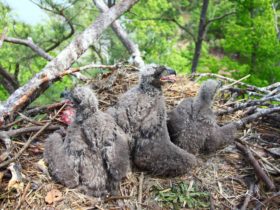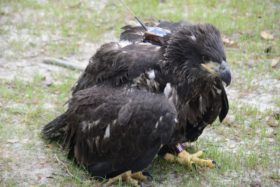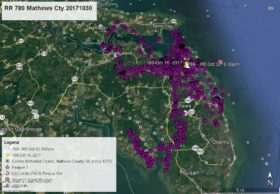the mantle vs. to mantle
Azalea map June 25, 2009
June 25, 2009July 1 Azalea Map
July 2, 2009
Categories

 Right photo – The (or a) “mantle” refers to the feathers in the upper middle of the back that form a “V” shape below the neck feathers (the nape) on the back of the head. Bird guides such as The Sibley Guide to Birds show the parts of birds under the section Bird Topography. NBG eaglet HE is showing off her “mantle” above.
Right photo – The (or a) “mantle” refers to the feathers in the upper middle of the back that form a “V” shape below the neck feathers (the nape) on the back of the head. Bird guides such as The Sibley Guide to Birds show the parts of birds under the section Bird Topography. NBG eaglet HE is showing off her “mantle” above.
Left photo – To “mantle” or mantling refers to when a raptor spreads its wings and haunches over its prey after capturing and while eating it, and is likely a way to prevent other raptors or animals from seeing and stealing their prey. All three NBG juveniles have been seen “mantling” over their food on the web cam.




7 Comments
Thanks Reese……the information you share here is really appreciated…and enjoyed 🙂
There seems to be a descriptive word missing from the “mantle” explanation of the feathers in the right foto =)
What descriptive word would you suggest and where would you insert it?
Perhaps placing the “or a” within a set of parentheses would help.
Reese, Thank you for increasing my knowledge about eagles. Could you please share a little bit about the “play” behavior that was seen over the Gardens. It looked like HK and HE (I think) were fighting. We know that they were “learning” eagle skills but what do they use these skills for in the wild? I have had suggested “bonding” rituals and fighting behavior. I have had a lot of people ask me about this behavior…
Thanks again! Dana
Dana – The “play” you describe is actually very serious business. There are many sides to the behavior we see displayed by these eagles, but I will describe the one we see most often called agonistic behavior. Competition between rivals, even siblings, is a complex mixture of aggression (i.e. attacks or threats), and escape (i.e. submission or fleeing). Birds often fight over things such as food (we have all seen that when prey is brought to the nest), territory or mates, but they usually avoid direct contact and therefore the risk of injury. Submission is used to avoid actual conflict. You see an example of submission when one eagle gets the food and the other(s) bow their head and step aside (submit) or fly to a branch (flee). The real world which these three young eagles is entering will require them to have both skills in order to survive. Practice makes perfect – hopefully.
Reese, how did you get so smart?? 🙂
I’m really enjoying your blogs.